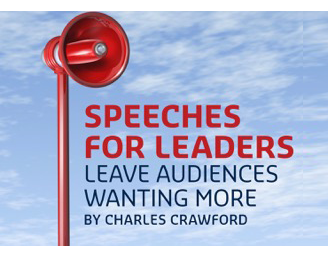One of the darker diplomatic and wider professional arts is writing a record of a conversation.
There’s a lot going on here:
- what to summarise – the words, the context, the ‘tone’, the silences?
- how in principle to summarise it – should the material be presented in the order it was spoken, or be re-organised to make the exchanges over the issues sound (to the reader) more coherent than they maybe were in real life?
- why to summarise it? Who’s the audience? the people at the meeting concerned? People not at the meeting concerned? People who might need to know what was said? History?
Then there’s how to do it well: how to use tenses properly to be 100% accurate about what was said; how to make clear who said what; how to separate out the key messages of the record from what was said and what might be fair helpful comment on it; how to be clear what’s important – and what matters; and how to suggest next steps?
Luckily amidst all this intrigue we have this magnificent example from the latest DIPLOMAT magazine, annotated with footnotes to show cunning points of micro-technique.
See eg this extract:
DETAIL
The Foreign Secretary called Bashem Foreign Minister Badhun4 on 30 April5 to take stock of preparations for the forthcoming visit to London by the Bashem Prime Minister.Megon Contract and Nuclear Technology Licences
The Foreign Secretary6 said that the UK side was expecting the Prime Ministers’ meeting to be marked by announcement of the MEGON missile contract. Bilateral relations were improving fast: this contract would be a strong symbol of success.7
Mr Badhun said that his Prime Minister was looking forward to the Summit, not least as he recalled his student days in Leicester and was delighted to see Leicester City FC doing so well.8 However, the Prime Minister was facing domestic embarrassment over nuclear export licence refusals by the UK side: three in the past few days to add to four earlier refusals. The Prime Minister’s cousin headed the Bashem nuclear authority: these refusals were making things very difficult, both substantively and presentationally.9
Mr Badhun emphasised that the UK’s ‘box-ticking’ approach seemed to be indicating a lack of trust in Bashem: “We are showing that we trust you, but you don’t seem to be trusting us!”10 The Prime Minister “could not leave London empty-handed.”11
The Foreign Secretary said that as Bashem knew, the UK had fully to respect its Nuclear Non-Proliferation Treaty (NPT) obligations. These licences had not been refused; they were in the queue pending further assurances from the Bashem side.
The Foreign Secretary proposed some senior bilateral consultations in London in the coming days at which any remaining concerns might be addressed in a spirit of professional partnership before the Summit.12
Foreign Minister Badhun welcomed (Comment: warmly)13 this idea, suggesting that the Prime Minister’s cousin himself take part. Bashem too was a full NPT member state and took its obligations seriously.
4 Demonstrate who initiated the call
5 Give the date (ie don’t say ‘this afternoon’). Helpful for the historical record
6 Start each paragraph by making it 100% clear who is saying what
7 Shows the rest of UK government that Foreign Secretary (FS) is opening by pushing UK interests – no need to go into much detail
8 Personal information is helpful to the intelligence agencies and gives ideas for making the guest welcome at the summit – see Next Steps
9 Not exactly what he said but a fair summary of what he was saying!
10 By using exact words the FM said you give the reader a sense of his tone/energy/intensity. Here the key word is Trust – make it clear in the record.
11 Important implicit message from Bashem side – we need something useful in return if you are to get that contract
12 Make it clear that this was the UK FM’s suggestion.
13 When inserting a comment in the factual report, make it clear it’s a comment
Note especially how the record combines sensible summaries with the occasional direct quotation to convey the tone of key moments.
Easy when you know how.











Who wrote this?
The usual tranquillity of PMCS Directorate has been disturbed. Many hours have been spent in heartfelt, at times fractious, debate. Principles are at stake. Stress levels have risen. And the two sides are as entrenched in their views as ever. What has caused these disputes? It is the Oxford comma.
How we write is essential to our reputation and our credibility. It is the output most seen by Ministers, Parliament and the public. We are judged on it. World-beating expertise based on a fine platform and an agile organisation will be undermined if we cannot set out in writing what our expertise is and why it is worth heeding. And writing is central to what PMCS does.
I have heard discussion of good writing since I joined FCO in 1980; two days of our 10-day induction were spent on drafting. Discussion is older than that. In 1945 Harold Nicholson told "Entrants to the Foreign Service" that; diplomacy is "not the art of amicable conversation but the technique of exchanging documents in ratifiable form"; "unless you have a reputation for accuracy you have no reputation at all"; and "inordinate length of despatches" caused reputational damage.
"unless you have a reputation for accuracy you have no reputation at all"; and "inordinate length of despatches" caused reputational damage.